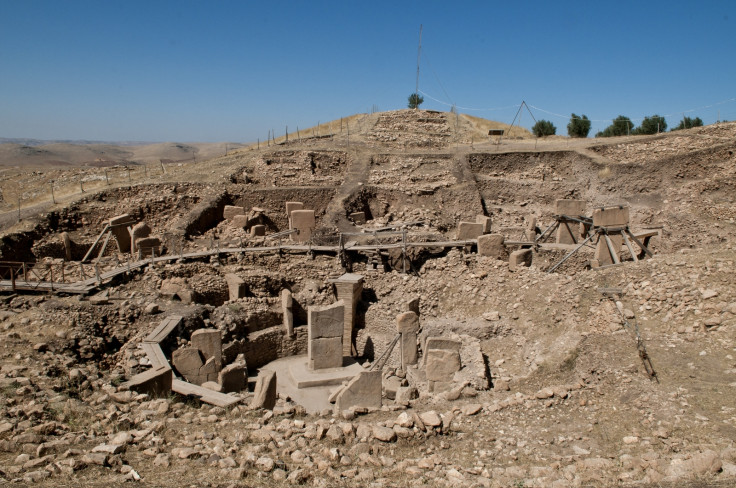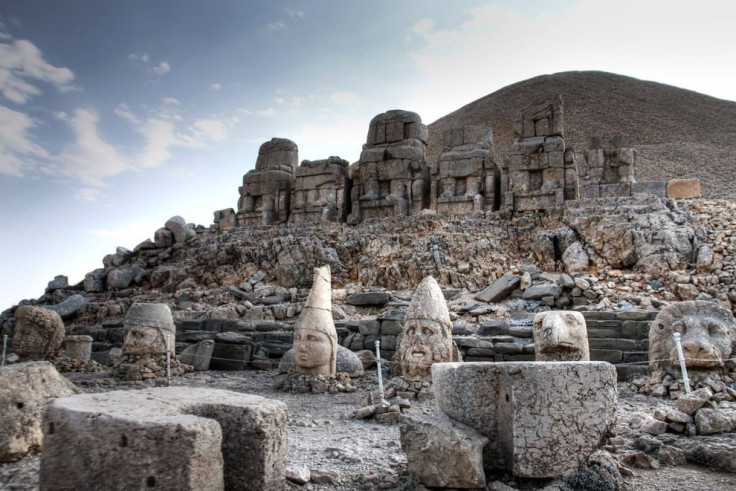World's oldest pictograph discovered in Göbekli Tepe shows decapitated head in vulture wing

What is believed to be the world's oldest pictograph has been discovered at the 12,000-year-old archaeological site of Göbekli Tepe in the Anatolia Region of Turkey.
The scene on the obelisk shows a human head in a vulture wing with the rest of the body below – experts believe it is an image of a sky burial.
A sky burial involves leaving bodies of the dead outside for birds and other animals to come and eat. They still take place in the Chinese provinces of Tibet, Qinghai, and Inner Mongolia and in Mongolia, with those who practice it believing the dead person's soul will go into the sky.
According to Hurriyet Daily News, two obelisks were found opposite each other and were shaped like the letter T. They were surrounded by small round obelisks.
Müslüm Ercan, director of the Şanlıurfa Museum and head of the Göbekli Tepe excavation, told the website: "The scene on the obelisk unearthed in Göbekli Tepe could be construed as the first pictograph because it depicts an event thematically. It depicts a human head in the wing of a vulture and a headless human body under the stela.

"There are various figures like cranes and scorpions around this figure. This is the portrayal of a moment; it could be the first example of pictograph. They are not random figures. We see this type of thing portrayal on the walls in 6,000-5,000 BC in Çatalhöyük [in modern-day western Turkey]."
Discussing sky burials, he added: "There were no graves 12,000 years ago. The dead bodies were left outdoors and raptors ate them. In this way, people believed the soul goes to the sky."
Göbekli Tepe was once a religious centre with 23 temples in the area. Ercan said the obelisks symbolise the sacred beings worshiped at the time: "People of this era used to gather in these temples at a certain time of the year to take vows and worship. After this ceremony, they returned to the plains, their living spaces."
It is home to the world's oldest temple, with two phases of ritual use going back to the 10<sup>th century BC, but topographic scans suggest there are more ancient structures possibly dating back 15,000 years.
© Copyright IBTimes 2025. All rights reserved.






















